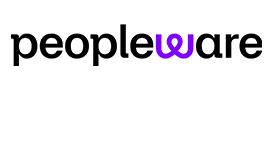Jutta Handlanger at injixo takes a look at burnout and questions if it’s an executive syndrome or a strategic priority.
The World Health Organization defines burnout as “a syndrome … resulting from chronic workplace stress that has not been successfully managed”. Statistics reveal that, worldwide, more and more people are struggling with it.
For many years, “burnout” was a word most commonly used together with the word “executive”: executive burnout, implying that it only affects business leaders. We now know that it can affect anyone.
Excessive workload and stress at work – particularly common in a hectic work environment like a call centre – are not the only causes of burnout. Personality traits and individual lifestyle also play a role.
Nevertheless, the work environment plays a big part in determining the mental health, well-being, and satisfaction of employees.
That’s why organizations and their leaders must take responsibility for creating working conditions that avoid excessive pressure and unsustainable stress, and thus minimize the risk of burnout.
This isn’t just altruism. It’s a win-win situation: employers that actively prevent burnout will also increase overall job satisfaction and employee engagement, ultimately leading to higher productivity, lower turnover, and better company results.
What Can You Do as a Leader to Prevent Burnout?
From our perspective, the most important thing that employers should do is to put people front and centre in their organization.
It’s the people who make new things happen. It’s the people who keep the business running. And it’s the people who make the business grow. At injixo, we call this “People-Centricity”.
To create a work environment where your employees not only feel comfortable but can also develop and grow personally, there are two areas that you as a leader should focus on:
- Establishing solid foundations for reducing excessive workload and performance pressure.
- Building and cultivating a positive corporate culture that reduces burnout while ensuring that personal and company goals are achieved.
Let’s explore these topics in turn.
1. Establishing Solid Foundations
In today’s working world, which is increasingly populated by Gen Z, factors such as self-actualization, enjoyment of work, a good working atmosphere, flexibility, and an attractive work environment are becoming must-haves.
This does not mean, however, that the new generation is less willing to perform. They just need to be motivated differently.
Command-and-control structures and top-down management are still common in many organizations, but they are no longer fit for purpose.
Good news: By accepting the new reality and tackling the three measures mentioned below, you will not only promote the well-being of your workforce but also demonstrate that you are a modern and empathetic employer. You’ll significantly increase your company’s attractiveness to today’s workforce.
Introducing Flexible Working Arrangements
Offering flexible working arrangements is crucial to addressing the individual needs of your employees.
This includes part-time work models, the option to work at home or remotely some or all of the time, or even job sharing. For employees, these measures can significantly improve work-life balance.
Even in organizations with more rigid shift work, employees can be given more flexibility, for example, through varying shift lengths, the fair distribution of less preferred shifts, and the possibility of swapping shifts.
Managing Workload
To prevent your employees from feeling overwhelmed and unable to cope with high expectations and the pressure of time and performance, it is important that you, as a leader, properly manage the workload.
This includes setting clear expectations and achievable goals. Give your employees responsibility for specific projects.
This promotes a sense of personal responsibility. Make sure employees have the necessary tools, knowledge, and autonomy to complete their tasks effectively.
You can also provide your employees with project or time management tools to help them manage their tasks and set priorities.
Through regular reviews of the workload, you can ensure that the workload is fairly distributed and that no one is frequently overloaded. Encourage your team members to take breaks and plan time off to prevent overwork.
This not only promotes well-being but also contributes to making employees perceive their jobs not to be monotonous, but varied and interesting.
At the same time, the proper management of workload ensures that employees experience a structured rather than chaotic work environment, which positively affects their motivation.
Creating a Comfortable Work Environment
Furthermore, it would help if you created a work environment in which your employees are physically comfortable.
That doesn’t just mean a desk at the right height and an ergonomically correct chair. It includes providing workplaces with a mix of natural light and correct artificial lighting, as well as a good indoor climate with plants or green areas.
Meeting and community rooms that enable collaboration and informal exchange are just as important as quiet rooms where one person can work undisturbed.
2. Building and Cultivating a Positive Corporate Culture
It’s vital to put in place solid foundations for avoiding burnout. But one thing is even more important for your employees’ well-being: your organization’s culture.
injixo has been in business for nearly 30 years. Over that time, we have experienced enormous changes both inside and outside the company.
Growth, technological innovation, and insights from a diverse workforce have taught us a lot about the impact our corporate culture has on employee experience and retention, as well as on motivation and engagement.
For us, the following components have emerged as indispensable components of a positive corporate culture:
Open Communication and Feedback
To promote open communication and feedback, you should establish regular individual and team meetings that encourage your employees to express their thoughts and suggestions openly.
You can also use feedback tools to enable continuous and constructive feedback. It is important to create an atmosphere of trust where feedback is seen as an opportunity for improvement, not as criticism.
Recognition and Appreciation
For employees, receiving recognition and appreciation for their work means a lot. You can convey this very effectively in everyday professional life through direct communication.
Simply saying “thank you” for a job well done and giving personal feedback can have a profound effect.
Active listening is also very important and promotes a culture of respect. And small gestures of appreciation contribute to creating a work environment in which everyone feels valued.
Psychological Safety
Open communication, trust, and appreciation are also the foundations of an environment of psychological safety. You can further promote this by treating mistakes as learning opportunities rather than failures or reasons for punishment.
A positive failure culture reduces the fear of making mistakes and encourages innovation and creativity. As a leader, you should lead by example by admitting your own mistakes and seeking constructive solutions.
Involving Employees in Decision-making Processes
In brainstorming sessions and strategy or team meetings, you should encourage all team members to share their ideas and perspectives.
By doing this, you involve your employees in decision-making processes and show that their opinions are important to you, the team, and the company.
Implementing employee ideas and transparently communicating decision-making processes strengthen the sense of appreciation and belonging.
Coaching and Individual Development Opportunities
Work with your employees to develop individual development plans to define personal career goals and ways to achieve them.
Regular coaching sessions can help your employees recognize their strengths. Furthermore, promoting training measures, such as participation in professional conferences, online courses, or certification programs, shows that the company is committed to the personal and professional development of its employees.
Teamwork and Community Atmosphere
Team-building activities and regular team events strengthen the sense of community and collaboration. An open office environment that facilitates collaboration among employees can further enhance the sense of belonging.
Team projects, shared goals and successes, and team support lead to reduced stress and prevent individual employees from facing challenges alone.
Bottom Line: Burnout Prevention as a Strategic Priority
Burnout doesn’t just affect managers. It affects anyone who experiences prolonged stress and overload at work.
Therefore, employers and leaders have a significant responsibility to create a work environment that promotes the well-being of employees and prevents excessive stress and burnout.
Achieving this goes far beyond a mere duty of care. It is a strategic management task that has the potential to benefit not only the employees but also the company itself.
Implementing flexible working models, careful workload management, and a supportive work environment are fundamental factors.
Beyond that, fostering a positive corporate culture is crucial: a culture based on open communication, trust, appreciation, psychological safety, a sense of community, personal development, and the active involvement of your employees in decision-making processes.
By taking these steps as a leader, you will not only contribute to preventing burnout but also improve your employees’ job satisfaction, your attractiveness as an employer, and your company’s productivity.
The concept of “People-Centricity” helps you put your employees front and center and create the basis for a resilient and high-performing team in which each individual can cope with the dynamic challenges of our constantly changing world of work.
This blog post has been re-published by kind permission of Peopleware – View the Original Article
For more information about Peopleware - visit the Peopleware Website
Call Centre Helper is not responsible for the content of these guest blog posts. The opinions expressed in this article are those of the author, and do not necessarily reflect those of Call Centre Helper.
Author: Peopleware
Published On: 14th May 2024 - Last modified: 23rd Oct 2024
Read more about - Guest Blogs, Peopleware






 Peopleware is the award-winning, multi-channel cloud workforce management application for contact centers and customer support. Over 300 customers, ranging in size from 50 to over 4,000 seats, trust Peopleware to bring work and demand in perfect balance while embracing the constant change in their business. With Peopleware, you spend less time and effort on manual forecasting and scheduling, while maximizing efficiency and focusing on what really matters: your people and customers.
Peopleware is the award-winning, multi-channel cloud workforce management application for contact centers and customer support. Over 300 customers, ranging in size from 50 to over 4,000 seats, trust Peopleware to bring work and demand in perfect balance while embracing the constant change in their business. With Peopleware, you spend less time and effort on manual forecasting and scheduling, while maximizing efficiency and focusing on what really matters: your people and customers.




























